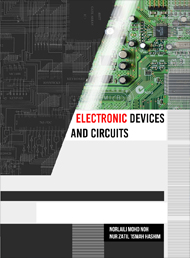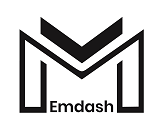Electronic Devices and Circuits

Title: Electronic Devices and Circuits
Authors: Norlaili Mohd Noh, Nur Zatil ‘Ismail Hashim
Price: RM40.00 ISBN: 978-967-461-569-7
Pick your mobile phone. Yes, one in front of you right now. Saying hello to someone who is 50 miles away from you? You can. Taking a picture of a breathtaking view of Mabul Island, Sabah while you are on vacation as a token of unforgettable good memory? You can. Maybe record a video of it? Of course, you can. Trying to understand better the concept of Ohm’s law from online resources after long lecture sessions at school? Definitely.
All of these are made possible with electronics. Everything from cooking to music, to cars and personal social interests, are made possible with the advancement of electronics. It makes us wonder, what would life be without electronics?
Electrons + mechanics = Electronics.
The behavioural response of electrons towards various conditions of the electric field conceptualizes the technology of electronics. To understand electronics is to understand electrons. Electrons, a part of the smallest element called atom, form the basis of operation of any electronic devices to date.
The simplest derivation of electronic devices is called diodes, defined by a simple combination of one N-type and one P-type semiconductors, which are formed either by donating (N-type) or accepting (P-type) electrons. A more complex approach can be seen in transistors, offering wider potential applications thanks to the back-to-back P-N junctions, capable of generating signal amplification. Both diodes and transistors are considered the most common devices found in the electronic world.
- Hits: 1213




